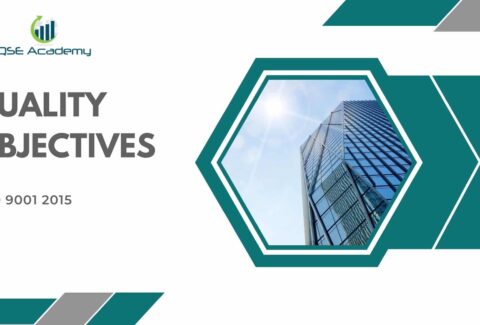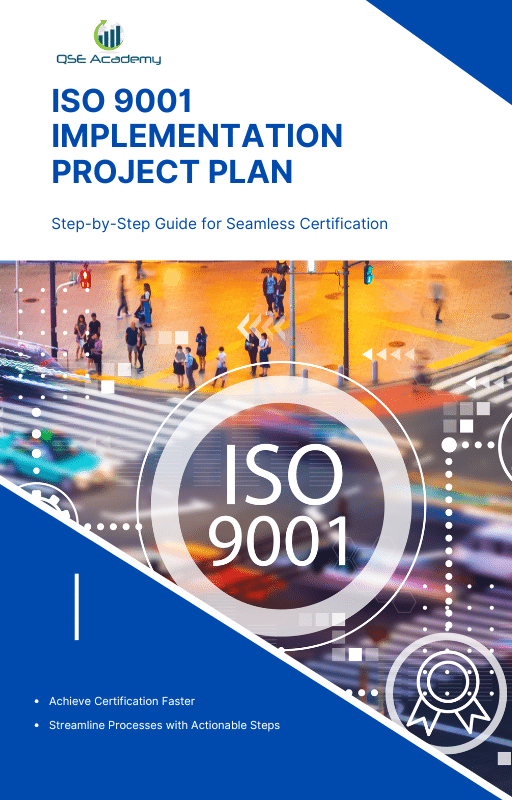What are the 10 clauses of ISO 9001?
What are the 10 clauses of ISO 9001?
If you’ve ever wondered, “What are the 10 clauses of ISO 9001?” you’re not alone. These 10 clauses form the backbone of the ISO 9001 standard, which is the world’s most recognized framework for quality management systems (QMS). Whether you’re new to ISO 9001 or looking for a simple way to understand its structure, you’ve come to the right place.
In short, the 10 clauses of ISO 9001 outline everything an organization needs to implement and maintain an effective quality management system. From understanding the organization’s context to planning, leadership, and continuous improvement, these clauses guide businesses of all sizes and industries toward delivering consistent, high-quality products and services.
In this article, we’ll break down the 10 clauses of ISO 9001 one by one. By the end, you’ll have a clear understanding of how they work together to create a system that helps organizations achieve their goals and keep customers happy. Ready to dive in? Let’s get started!
Overview of the 10 Clauses of ISO 9001
Before we dive into each clause individually, let’s take a quick look at how the 10 clauses of ISO 9001 are structured and why they matter. These clauses provide a systematic framework for organizations to create, maintain, and continually improve their quality management systems (QMS). Think of them as the “blueprint” for building an efficient and effective system that delivers quality and value.
Why Does ISO 9001 Have 10 Clauses?
The structure of ISO 9001 is based on something called the High-Level Structure (HLS). This structure was designed to make ISO standards consistent across the board, which is super helpful if an organization wants to implement multiple standards, like ISO 9001 alongside ISO 14001 (environmental management) or ISO 45001 (health and safety).
By breaking ISO 9001 into 10 clauses, the standard becomes easier to follow and more adaptable to any type of business or industry. Whether you’re running a small bakery or managing a large manufacturing plant, the 10 clauses of ISO 9001 provide a step-by-step guide to achieving and maintaining quality.
A Quick Snapshot of the 10 Clauses of ISO 9001
Here’s a brief overview of what each clause covers. Don’t worry—we’ll explore each one in more detail later in the article.
- Scope: Defines what ISO 9001 covers and its applicability.
- Normative References: Points to other essential documents that support ISO 9001.
- Terms and Definitions: Clarifies key terms used throughout the standard.
- Context of the Organization: Focuses on understanding the internal and external factors that affect the organization’s QMS.
- Leadership: Highlights the role of top management in driving quality and creating a strong quality culture.
- Planning: Covers identifying risks and opportunities and setting objectives for quality management.
- Support: Focuses on the resources, infrastructure, and communication needed to implement the QMS effectively.
- Operation: Details how organizations deliver products or services that meet customer expectations.
- Performance Evaluation: Emphasizes the importance of monitoring and measuring how well the QMS is working.
- Improvement: Encourages continual improvement by addressing nonconformities and finding ways to enhance processes.
How Do These Clauses Work Together?
Each clause builds upon the previous one to create a comprehensive framework for quality management. For example:
- Clause 4 helps you understand your organization’s context, which influences your leadership strategy in Clause 5.
- Clause 6 ensures you plan effectively to address risks, while Clause 7 ensures you have the resources to implement those plans.
- Finally, Clauses 9 and 10 help you evaluate and improve the system over time.
By understanding the 10 clauses of ISO 9001, you’ll see how they form a continuous cycle of improvement. This structure isn’t just about ticking boxes—it’s about creating a QMS that evolves with your organization’s needs.
Now that we’ve covered the big picture, let’s dive into each clause and explore how they contribute to building a successful QMS. Ready? Let’s start with Clause 1: Scope!
Breaking Down the 10 Clauses of ISO 9001
Now it’s time to dive into the details! Each of the 10 clauses of ISO 9001 serves a specific purpose in creating a well-rounded quality management system (QMS). Let’s break them down one by one and uncover how they work together to help organizations achieve consistent quality.
Clause 1: Scope
This is where ISO 9001 sets the stage. The Scope clause explains what the standard covers and how it applies to organizations. Essentially, it defines ISO 9001 as a framework for organizations of all sizes and industries to establish, implement, maintain, and improve their QMS.
Why does this matter? It’s the foundation for everything else. By understanding the scope of ISO 9001, you’ll see how the standard applies universally, whether you’re running a small business or managing operations for a multinational corporation. This clause ensures that the standard is flexible enough to meet your needs.
Clause 2: Normative References
Clause 2 is short and sweet. It points to other essential documents that provide additional guidance for understanding ISO 9001. While the core standard stands alone, these references can be helpful if you need more technical details.
For most users, this clause acts as a reminder that there are supporting resources available to deepen your understanding of the 10 clauses of ISO 9001.
Clause 3: Terms and Definitions
Consistency is key in any quality management system, and Clause 3 ensures that everyone is on the same page. This clause defines key terms used throughout ISO 9001, so there’s no confusion about what phrases like “nonconformity” or “corrective action” mean.
Understanding the definitions is especially important when you’re implementing ISO 9001 or preparing for an audit. It helps everyone involved—from employees to auditors—speak the same language.
Clause 4: Context of the Organization
Here’s where things get interesting. Clause 4 requires organizations to take a step back and look at the bigger picture. It’s all about understanding the internal and external factors that could impact your QMS. For example:
- What are your organization’s goals?
- Who are your key stakeholders, and what do they expect?
- What risks and opportunities exist in your environment?
This clause ensures that your QMS is tailored to your unique context. It’s not a one-size-fits-all approach—your QMS should reflect the specific challenges and opportunities your organization faces. That’s why understanding the 10 clauses of ISO 9001, starting with context, is so important.
Clause 5: Leadership
Leadership is at the heart of any successful QMS, and Clause 5 highlights the critical role that top management plays. This clause emphasizes the need for leaders to:
- Take accountability for the QMS.
- Set clear quality objectives.
- Foster a culture that prioritizes quality and customer satisfaction.
In simpler terms, Clause 5 ensures that quality starts at the top. When leadership is fully committed to ISO 9001, it sets the tone for the entire organization.
Clause 6: Planning
Planning is where the rubber meets the road. Clause 6 focuses on identifying risks and opportunities and setting objectives for your QMS. It’s about being proactive rather than reactive.
For example, if you know that supply chain disruptions could impact your product quality, this clause ensures you have a plan in place to mitigate that risk. Planning also ties directly to the organization’s overall goals, making sure quality management aligns with the bigger picture.
Clause 7: Support
Think of Clause 7 as the resources and tools your organization needs to keep the QMS running smoothly. This includes:
- Ensuring you have the right people in the right roles.
- Providing the necessary infrastructure, like equipment and technology.
- Facilitating clear and effective communication throughout the organization.
Support is what keeps the QMS alive, making it one of the most practical clauses in the 10 clauses of ISO 9001.
Clause 8: Operation
This clause gets into the nitty-gritty of how you deliver products or services that meet customer expectations. Clause 8 covers everything from planning operations to controlling external providers (like suppliers) and ensuring quality during production or service delivery.
For instance, if you’re a manufacturer, Clause 8 ensures that every product coming off the line meets consistent standards. It’s all about execution—putting the plans you’ve made into action.
Clause 9: Performance Evaluation
How do you know if your QMS is working? Clause 9 answers that question by focusing on monitoring, measuring, and evaluating performance. This includes:
- Internal audits to assess compliance with ISO 9001.
- Gathering customer feedback to measure satisfaction.
- Conducting management reviews to ensure the QMS stays on track.
Performance evaluation helps you identify what’s working, what’s not, and what can be improved. It’s a critical part of the continuous improvement process.
Clause 10: Improvement
Last but definitely not least, Clause 10 emphasizes the importance of continual improvement. This clause is about identifying nonconformities, taking corrective action, and finding ways to enhance your processes.
Whether it’s through small tweaks or major overhauls, improvement ensures that your QMS stays relevant and effective over time. After all, quality isn’t a one-time achievement—it’s an ongoing journey.
Now that we’ve broken down the 10 clauses of ISO 9001, you can see how each one plays a vital role in building a strong QMS. Together, they create a system that helps organizations improve, meet customer expectations, and achieve long-term success.
In the next section, let’s explore how these clauses work together as a cohesive framework to make ISO 9001 so effective. Ready to connect the dots? Let’s dive in!
How the 10 Clauses of ISO 9001 Work Together
Now that we’ve explored each of the 10 clauses of ISO 9001, let’s look at how they come together as a complete framework. Think of these clauses like pieces of a puzzle—they all fit together to create a clear picture of a quality management system (QMS) that’s efficient, effective, and built for continuous improvement.
A Cohesive Framework for Quality Management
The beauty of the 10 clauses of ISO 9001 lies in how they’re designed to flow logically. Each clause builds on the one before it, creating a step-by-step roadmap for organizations to follow. For instance:
- Clause 4 helps you understand your organization’s context, which sets the foundation for leadership (Clause 5) and planning (Clause 6).
- Once you’ve planned your QMS, Clause 7 ensures you have the resources to support it, and Clause 8 focuses on putting those plans into action through operations.
- Finally, Clauses 9 and 10 close the loop by evaluating performance and driving continual improvement.
This flow ensures that every aspect of the QMS is interconnected, leaving no gaps and ensuring that quality is baked into every step.
An Example of How the Clauses Work Together
Let’s make this relatable with an example. Imagine a company that manufactures eco-friendly water bottles:
- Clause 4 (Context of the Organization): The company identifies that its primary stakeholders are environmentally conscious consumers and retailers. It also recognizes that it faces risks like fluctuating raw material prices and opportunities like growing demand for sustainable products.
- Clause 5 (Leadership): The leadership team commits to prioritizing eco-friendly practices, sets quality objectives, and communicates the importance of customer satisfaction to all employees.
- Clause 6 (Planning): The company develops a plan to source sustainable materials, address potential risks (like supplier delays), and achieve its quality objectives.
- Clause 7 (Support): The company ensures it has the right equipment, trained staff, and effective communication channels to produce high-quality water bottles.
- Clause 8 (Operation): The company focuses on producing water bottles consistently, managing its suppliers, and ensuring every product meets customer expectations.
- Clause 9 (Performance Evaluation): The company gathers feedback from retailers and customers, conducts internal audits, and reviews its progress toward quality goals.
- Clause 10 (Improvement): Based on feedback and audits, the company identifies areas for improvement, such as reducing production waste, and implements corrective actions to enhance its processes.
By following the 10 clauses of ISO 9001, this company creates a system that’s not only compliant but also focused on delivering quality while staying true to its values.
Continuous Improvement: The Heart of ISO 9001
One of the most important aspects of the 10 clauses of ISO 9001 is how they work together to drive continual improvement. This isn’t just about fixing problems—it’s about finding new ways to do things better, faster, and more efficiently. By evaluating performance (Clause 9) and making improvements (Clause 10), organizations can adapt to changing circumstances and remain competitive over time.
For example, let’s say a company identifies a bottleneck in its production line during an internal audit (Clause 9). By addressing this issue and implementing a more efficient workflow (Clause 10), the company not only resolves the problem but also enhances its overall operations.
Why Understanding the Interconnection Matters
When you see how the 10 clauses of ISO 9001 work together, it becomes clear that the standard isn’t just a checklist—it’s a dynamic system designed to help organizations succeed. Each clause supports the others, creating a framework that’s adaptable to different industries, sizes, and challenges.
Understanding this interconnection is crucial for implementing ISO 9001 effectively. It ensures that your QMS isn’t just compliant but also practical, efficient, and aligned with your organization’s goals.
In the next section, let’s explore why having a solid understanding of the 10 clauses of ISO 9001 is essential for businesses and how it can drive long-term success. Ready to wrap it all up? Let’s go!
Why Understanding the 10 Clauses of ISO 9001 Is Important
By now, you’ve probably realized that the 10 clauses of ISO 9001 are more than just guidelines—they’re the foundation for building a successful quality management system (QMS). But why is it so important to truly understand these clauses, rather than just following them step by step? Let’s break it down together.
1. They Provide a Clear Roadmap for Quality Management
Understanding the 10 clauses of ISO 9001 gives you a clear picture of how a QMS works from start to finish. Instead of feeling overwhelmed by the concept of “quality management,” these clauses break it down into manageable steps. For example:
- Clause 4 reminds you to evaluate your organization’s environment and stakeholders.
- Clause 6 helps you plan for risks and opportunities.
- Clause 10 ensures you’re always improving.
When you understand this roadmap, implementing ISO 9001 becomes less daunting and more actionable.
2. They Help Align Your QMS with Your Business Goals
One of the best things about ISO 9001 is how flexible it is. It’s designed to work for any organization, regardless of size or industry. By understanding the 10 clauses of ISO 9001, you can tailor the standard to fit your unique needs.
For example, if your business goal is to improve customer satisfaction, you’ll see how Clause 5 (Leadership) and Clause 9 (Performance Evaluation) directly support that goal. On the other hand, if you’re focused on reducing waste, Clause 6 (Planning) and Clause 8 (Operation) will guide you in addressing inefficiencies.
Understanding the clauses helps you connect the dots between ISO 9001 and your overall strategy.
3. They Promote a Culture of Quality
ISO 9001 isn’t just about systems and processes—it’s about creating a culture where quality is a priority for everyone in the organization. When leadership and employees understand the 10 clauses of ISO 9001, it fosters a shared commitment to improvement.
For example:
- Clause 5 (Leadership) encourages management to lead by example, setting the tone for a quality-focused culture.
- Clause 7 (Support) ensures employees have the training and resources they need to contribute to quality objectives.
When everyone understands their role in the QMS, it strengthens teamwork and accountability.
4. They Drive Continuous Improvement
One of the biggest benefits of the 10 clauses of ISO 9001 is how they encourage organizations to keep getting better. By regularly monitoring performance (Clause 9) and identifying areas for improvement (Clause 10), businesses can adapt to changes, fix inefficiencies, and stay ahead of the competition.
For example, an organization might use customer feedback collected through Clause 9 to identify recurring complaints. By addressing those complaints under Clause 10, they improve their products or services, leading to happier customers and a stronger reputation.
5. They Build Trust with Customers and Stakeholders
When customers see that an organization is ISO 9001 certified, it signals that the business is committed to quality. But certification is more than just a badge—it’s proof that the organization understands and follows the 10 clauses of ISO 9001 to deliver consistent results.
This understanding builds trust with customers, partners, and stakeholders. For instance, Clause 8 (Operation) ensures that products or services consistently meet expectations, while Clause 9 (Performance Evaluation) ensures ongoing customer satisfaction. Together, these clauses create a system that customers can rely on.
6. They Make Audits and Certification Easier
If you’re working toward ISO 9001 certification, understanding the 10 clauses of ISO 9001 will make the process smoother. Auditors want to see that you’re not just following the standard but that you truly understand how it applies to your organization.
For example, when you can explain how Clause 4 (Context of the Organization) influenced your QMS design or how Clause 7 (Support) ensures employee readiness, it demonstrates that you’ve built a thoughtful, well-integrated system.
Why It’s Worth the Effort
Taking the time to understand the 10 clauses of ISO 9001 is an investment in your organization’s success. It’s not just about meeting requirements—it’s about unlocking the full potential of your QMS. With a solid understanding, you can implement ISO 9001 in a way that drives efficiency, builds customer trust, and supports long-term growth.
In the next section, let’s wrap everything up and revisit why the 10 clauses of ISO 9001 are such a game-changer for organizations around the world. Ready to bring it all together? Let’s go!
Conclusion: What Are the 10 Clauses of ISO 9001?
So, what are the 10 clauses of ISO 9001, and why do they matter so much? These clauses form the backbone of one of the world’s most trusted quality management standards, helping organizations build systems that are effective, efficient, and built for continuous improvement. From understanding the context of your organization (Clause 4) to focusing on leadership (Clause 5) and driving continual improvement (Clause 10), each clause plays a critical role in creating a framework for success.
The 10 clauses of ISO 9001 aren’t just about meeting requirements—they’re about creating real, lasting value. They help businesses of all sizes and industries achieve consistency, improve processes, and deliver quality products and services to their customers. Whether you’re just starting your ISO 9001 journey or you’re working to refine your existing QMS, understanding these clauses gives you the tools to implement the standard effectively and align it with your organization’s goals.
By working through these clauses step by step, you’re not only building a stronger business but also creating trust with your customers, employees, and stakeholders. That’s the real power of ISO 9001—it’s not just a standard, but a pathway to better business practices and long-term success.
So, now that you know the 10 clauses of ISO 9001, how do you see them benefiting your organization? Whether it’s improving operations, boosting customer satisfaction, or driving growth, the possibilities are endless. Remember, quality is a journey, and ISO 9001 is here to guide the way!
Looking for More Resources on ISO 9001?
Looking for ISO 9001 Resources Tailored to Your Industry?
If this article helped clarify ISO 9001, take the next step with our industry-focused tools designed to simplify your certification journey:
📦 ISO 9001 Documentation Kits by Industry: Whether you’re in manufacturing, construction, consulting, or healthcare — we have complete, ready-to-use documentation tailored for your sector.
🎓 Online ISO 9001 Training: Learn how to implement ISO 9001 effectively with our easy-to-follow video lessons, real-world examples, and practical exercises.
📋 ISO 9001 Checklist: Download our step-by-step checklist to ensure your QMS meets all the 9001:2015 requirements from start to finish.
These resources are crafted to save you time, reduce stress, and help you achieve certification with confidence. Choose your industry and start now!

👋 Hi, I’m HAFSA, and for the past 12 years, I’ve been on a journey to
make ISO standards less intimidating and more approachable for everyone.
Whether it’s ISO 9001, ISO 22000, or the cosmetics-focused ISO 22716,
I’ve spent my career turning complex jargon into clear, actionable steps
that businesses can actually use. I’m not here to call myself an expert—I prefer “enthusiast” because I truly love what I do.
There’s something incredibly rewarding about helping people navigate food safety and quality management systems
in a way that feels simple, practical, and even enjoyable.
When I’m not writing about standards, you’ll probably find me playing Piano 🎹, connecting with people, or diving into my next big project💫.
I’m an engineer specialized in the food and agricultural industry
I have a Master’s in QHSE management and over 12 years of experience as a Quality Manager
I’ve helped more than 15 companies implement ISO 9001, ISO 22000, ISO 22716, GMP, and other standards
My clients include food producers, cosmetics manufacturers, laboratories, and service companies
I believe quality systems should be simple, useful, and efficient
Outside of work, I play piano and love learning something new every day
Let’s make ISO less about stress and more about success! 🙏

















